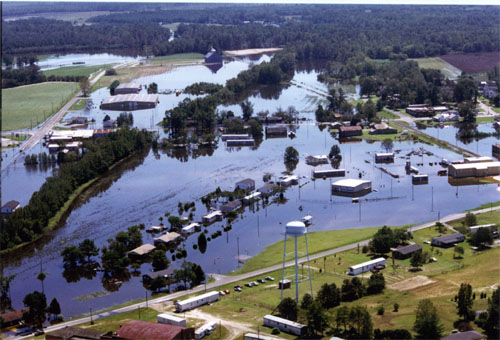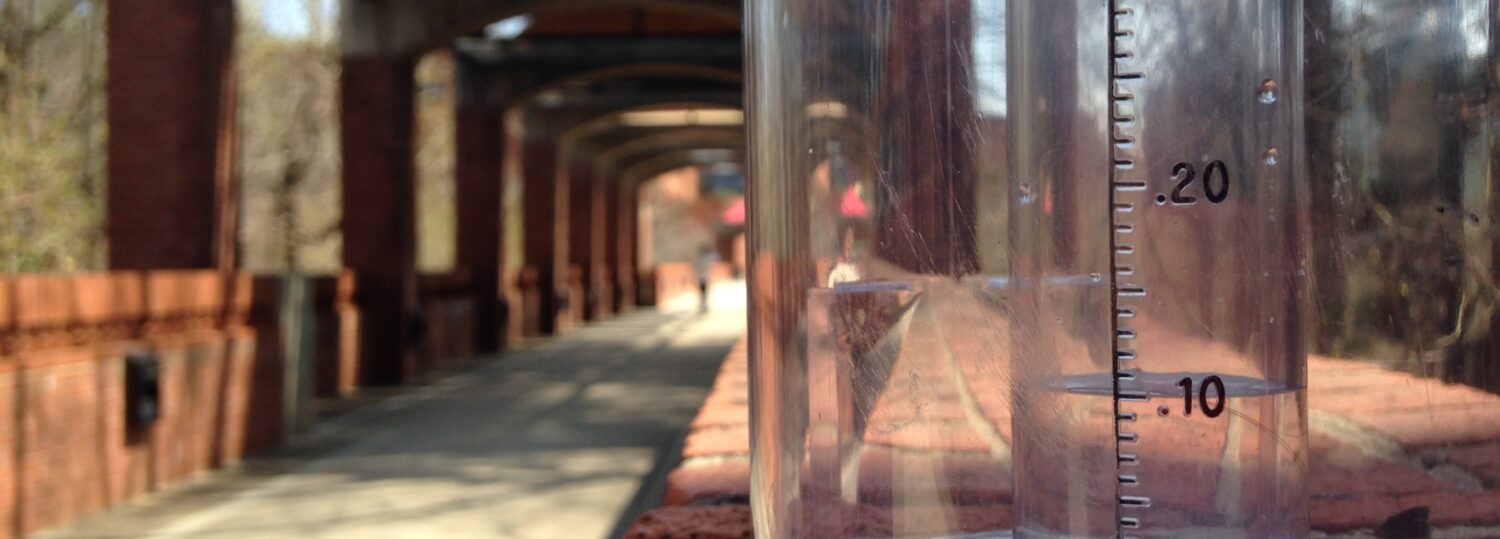We conclude our series on CoCoRaHS March Madness with some perspective on heavy rain events and how CoCoRaHS observations are used.

Heavy rain goes by many names: “frog-strangler”, “gully-washer”, “raining cats and dogs”, and “raining to beat the band”, just to name a few. No matter what name you give it, precipitation in all forms and intensities is a vital aspect of our climate. In particular, heavy rain events can have a big impact on everything from agriculture to transportation. Many CoCoRaHS observers have recorded heavy rain events in North Carolina, but what do these amounts translate to?
It takes one tenth of an inch of rain to wet the ground. That’s a pretty light amount for a CoCoRaHS observer to measure in a single day, but how much water is that over an averaged-sized backyard? Over a half acre, a tenth of an inch of rain amounts to 1,357 gallons of water. That’s equal to the amount of water used for flushing a typical toilet (1.6 gallons per flush) about 850 times. It’s not much in one rain gauge, but that’s a lot to go down the drain over half an acre. For a typical bathtub (which holds close to 50 gallons), that would be about 27 baths in one day. Next time it rains, don’t forget your rubber ducky!
But wait, this is all about heavy rain! When Hurricane Irene rolled through on August 27, 2011, one CoCoRaHS observer in Williamston, NC, reported 7.47 inches of rain. According to NOAA Precipitation Frequency Estimates, this amount of rain falling in one day is a once-in-25-year event. That much rain resulted in widespread flooding across eastern NC, and it’s no wonder why. Over even half an acre, 7.47 inches of rain is about 101,355 gallons of water! That’s equivalent to over 2,000 baths, or over 63,000 toilet flushes, or over 810,000 grande (16 fl oz) cups of coffee in one day! I’m jittery just thinking about that much coffee.

Regardless of what you call heavy rain (be it a frog-strangler or a lot of coffee), the impact it has makes it important to measure. Heavy rain leads to flooding as with Hurricane Irene, while a lack of rain leads to drought conditions impacting both agriculture and water resources.
Measurements from CoCoRaHS observers are used in many different ways. Forecasters use the precipitation information to help them make better forecasts. Hydrologists use CoCoRaHS observations to help predict flood potential. The drought information provided by CoCoRaHS observers is also used in the U.S. Drought Monitor to chart drought conditions across the country. And CoCoRaHS data is used by plenty of other groups, including our office, for everything from tracking precipitation trends to monitoring rainfall where we live, work, and play.
To all the NC CoCoRaHS observers, thank you for your observations, keep them coming! CoCoRaHS is always looking for more volunteers. CoCoRaHS March Madness isn’t over yet. North Carolina has won March Madness in three of the last four years (2011, 2012, and 2014), so let’s make it four out of five!
